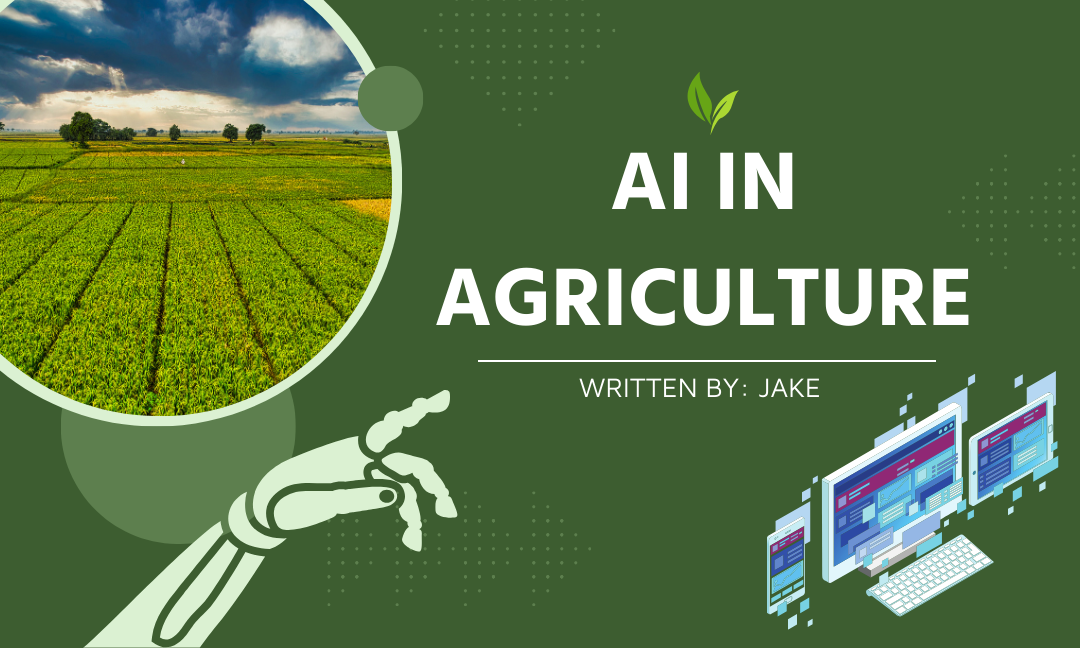Written by Jake
Edited by Liam Statham
Designed by Eshika Hiremath
Published by Kiritika Rana
As the world population continues to grow, the demand for food follows. New technologies designed to make our food systems more efficient are needed to meet the demand. One popular technology that’s taking the world by storm is artificial intelligence or AI. According to Britannica, AI is defined as “The ability of a digital computer or computer-controlled robot to perform tasks commonly associated with intelligent beings.” This blog will discuss how AI can be leveraged to optimize various agricultural processes.
Crop Yield
 To begin, one way AI technology is being used in agriculture is yield prediction. Crop yield is the measurement of the amount of crop grown per unit of land area. AI can predict crop yield in a particular season using data such as the climate, weather, and other environmental factors. This can help farmers make decisions about when to plant/harvest crops to maximize profits and agricultural output. For example, an AI system was able to count coffee beans on a tree and group them into categories such as harvestable, not harvestable, and maturing. This allowed farmers to plan out the harvest better.
To begin, one way AI technology is being used in agriculture is yield prediction. Crop yield is the measurement of the amount of crop grown per unit of land area. AI can predict crop yield in a particular season using data such as the climate, weather, and other environmental factors. This can help farmers make decisions about when to plant/harvest crops to maximize profits and agricultural output. For example, an AI system was able to count coffee beans on a tree and group them into categories such as harvestable, not harvestable, and maturing. This allowed farmers to plan out the harvest better.
Disease and Weed Detection
AI can also be used to detect various diseases and weeds among plants. Sometimes, it can be difficult to differentiate between weeds and crops in a big farm; therefore, AI can be very useful. Additionally, because AI can detect weeds more accurately if given lots of data, its capabilities will always be improving. Technologies such as robots that destroy weeds or diseased crops can be used in place of other traditional methods to minimize the use of fertilizers or pesticides. This is beneficial because using fertilizers or pesticides can harm aquatic environments.
Soil Management
 Another use of AI in agriculture is soil management. AI can be used to keep track of the moisture content, the temperature, and the overall quality of the soil. This can allow farmers to optimize the soil content to ensure that they get the best harvest possible.
Another use of AI in agriculture is soil management. AI can be used to keep track of the moisture content, the temperature, and the overall quality of the soil. This can allow farmers to optimize the soil content to ensure that they get the best harvest possible.
Animal Welfare
 Finally, AI can also be used to analyze animal behaviour, allowing farmers to better understand the health of their livestock. For example, AI systems have been used to monitor body temperatures, weight, and growth rates. It can also be used to detect parasites, ulcers, and injuries. Additionally, AI can be used to find patterns in environmental factors and livestock growth, disease, and mortality.
Finally, AI can also be used to analyze animal behaviour, allowing farmers to better understand the health of their livestock. For example, AI systems have been used to monitor body temperatures, weight, and growth rates. It can also be used to detect parasites, ulcers, and injuries. Additionally, AI can be used to find patterns in environmental factors and livestock growth, disease, and mortality.
Conclusion
Although the rise of AI in our lives can be frightening considering how AI is predicted to take over jobs in the future, it can be used to sustain the ever-growing human population by making agriculture more efficient. AI is still an emerging technology, so who knows what the future may hold.
References
Artificial intelligence (AI) | Definition, Examples, Types, Applications, Companies, & Facts | Britannica
What AI Means For Animals – NOEMA (noemamag.com)
Machine Learning in Agriculture: Applications and Techniques | by Sciforce | Sciforce | Medium
Sensors | Free Full-Text | Machine Learning in Agriculture: A Review (mdpi.com)

